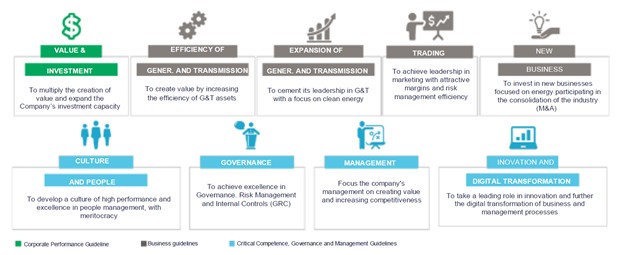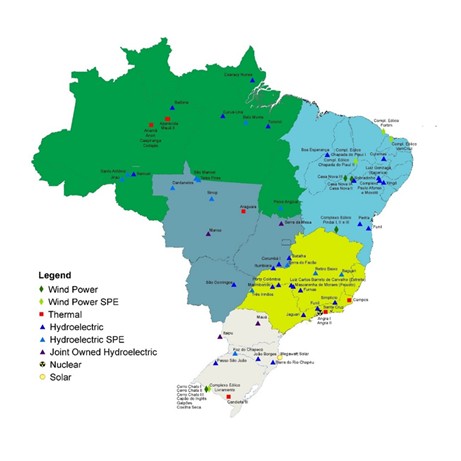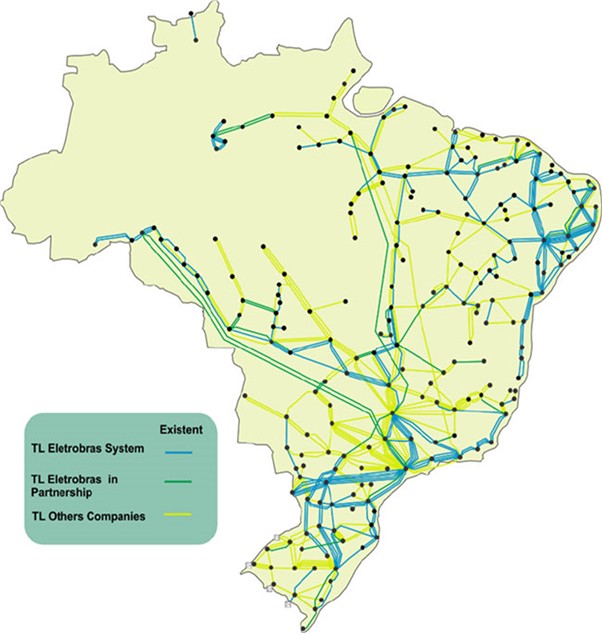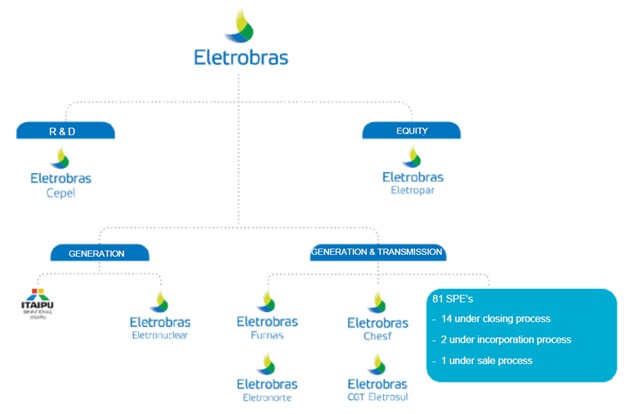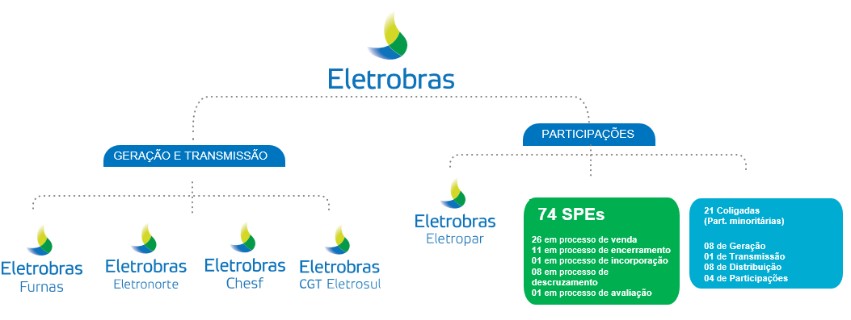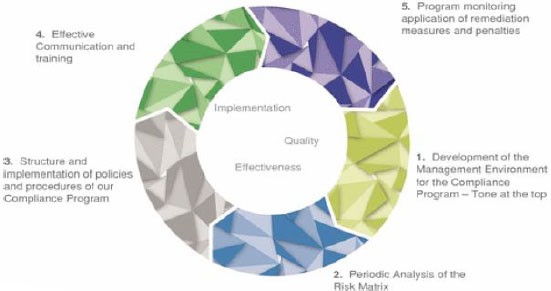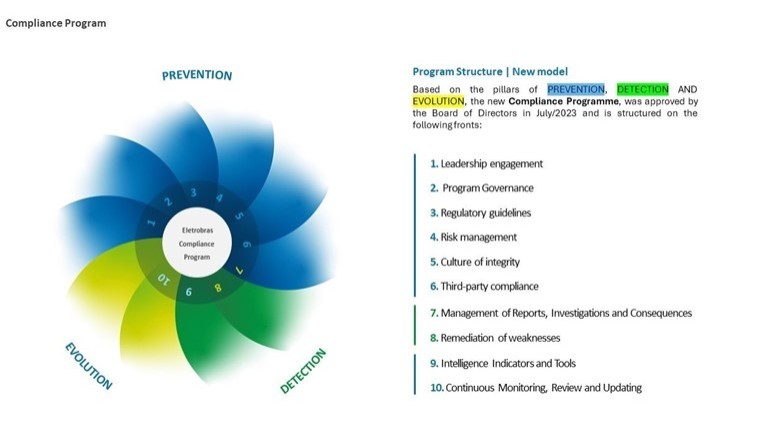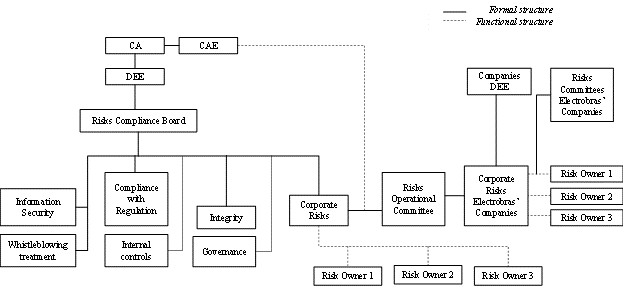Our insurance policies cover only partDepending on ANEEL’s review of the losses thattariffs to be charged by our transmission companies, we may incur. If we are unable to eventually renewnot be adequately compensated for the costs and expenses of our insurance policiesinvestments in our transmission assets, which could negatively impact our financial condition and results of operations.
Our subsidiaries entered into a Transmission Infrastructure Usage Agreement with Eletronet. Adverse decisions made by the relevant regulatory body in respect of this agreement may have adverse effects on our transmission revenues.
In 1999, our subsidiaries CGT Eletrosul, Chesf, Eletronorte, and Furnas entered into Transmission Infrastructure Usage Agreement No. ECE-1.166/1999 with Lightpar (now Eletronet). Concession contracts require that a portion of the additional revenues obtained from time to time or losses or other liabilities occur that are not covered by insurance or that exceed our insurance limits, we could bethe use of the transmission infrastructure subject to significant unexpected losses, which may adversely impact our results of operations and financial condition. Currently, the Candiota 3 plant does not have an operational risk insurance in place and, as a result, if any operational damage event occurs, the cost will notconcession be covered by any insurance.
Also, accordingallocated to Sections 8 and 8.2 of our D&O insurance policy, it is necessary to notify the insurer regarding the public offer of assets and specially the changes on our control to make an endorsement to balance the insured risk and, subsequently, pay an additional premium within 60 daysreducing tariffs for users of the public offer announcement. Our businesstransmission system.
An administrative proceeding is currently underway by ANEEL to determine the amounts resulting from the execution of Contract No. ECE-1.166/1999 which must be reallocated to reducing tariffs for users of the transmission system. ANEEL may also extend the scope of this administrative proceeding to investigate other aspects of the Transmission Infrastructure Usage Agreement. A potential adverse decision resulting from this ongoing administrative proceeding could have a material adverse effect on the revenues we derive from the transmission segment.
We are subject to risks associated with failure to comply with the applicable data protection laws, and financial conditionswe may be adversely affected inby the eventimposition of fines and other types of sanctions.
Although we fail to timely notify our insurers.
We do not have alternative supply sources for the key raw materials that the thermal and nuclear plants use.
Our thermal plants operate on coal, natural gas and/or oil and Eletronuclear’s nuclear plants rely on processed uranium. In each case, we are entirely dependent on third parties, sometimes monopolies, for the provision of these raw materials. If supplies of these raw materials become unavailable or may not be purchased on reasonable terms for any reason, such as significant increases in price due to inflation, we do not have alternative supply sources and, therefore, the ability of our thermal and/or nuclear plants, as applicable, to generate electricity would be adversely affected, which may impact our results of operations and financial condition.
With respect to uranium, Eletronuclear’s has a single supplier, Indústrias Nucleares do Brasil S.A., which faces operational and financial challenges.
With respect to coal, we have two suppliers, Companhia Riograndense de Mineração, which also faces financial challenges, and Seival Sul Mineração, which does not have the installed capacity to meet the plant’s demand. If any of these suppliers are not ablealways seek to comply with and adapt to data protection laws (such as Law No. 12,965/2014 (“Brazilian Internet Act”) and the Brazilian General Law for Personal Data Protection (Law No. 13,709/2018) (“LGPD”) and their contractsrelated regulations), we cannot guarantee that our personal data processing activities will always be secure and will not be subject to fines and other types of sanctions.
The LGPD provides comprehensive regulation for the processing of personal data in Brazil. It established detailed rules for the collection, use, processing, storage, and disposal of personal data and applies to all economic sectors and the relationships between customers and companies, employees and employers and others where personal data is processed, both in the digital and physical environment.
The LGPD requires a comprehensive data protection governance to be implemented, comprising policies, data mappings, documentation of risk and decisions made, processes for fulfilling rights and dealing with data protection incidents, procedures to secure third-party compliance, and the appointment of a data protection officer.
Failure to comply with the LGPD, especially in ensuring data subjects’ rights, providing clear information about our personal data processing activities, adhering to the original purpose of data collection, observing legal data storage periods, and implementing required security standards, could subject us to certain administrative sanctions. These sanctions, which may be applied individually or have their production processes interrupted, totallycumulatively, include warnings, mandatory incident disclosure, temporary blocking or partially,deletion of personal data, suspension or prohibition of data processing activities, and fines of up to 2% of the company’s, group’s, or conglomerate’s revenue in Brazil for the last fiscal year, excluding taxes, with a maximum of R$50.0 million per violation.
Moreover, non-compliance with LGPD and other data protection laws may expose us to liability for material, moral, individual, or collective damages, being subject to risks, such as (i) the filing of lawsuits claiming damages resulting from violations, based not only on LGPD, but also on other sectorial legislation; and (ii) the application of penalties provided for in the Consumer Defense Code and the Brazilian Internet Act by relevant consumer protection agencies, such as any Federal or State Prosecutors' Office and the National Consumer Secretariat (Secretaria Nacional do Consumidor). Failure by us to adhere to the LGPD or any privacy laws or regulations also carries the risk of individual or collective lawsuits and claim for compensation for damages, especially in cases of information security incidents that result in unauthorized access to personal data.
The application of penalties, publicizing of infractions or obligations to compensate for failures in the protection of personal data or LGPD compliance could adversely impact our thermalreputation, and nuclear plants could be adversely affected.
Strikes, work stoppages or labor unrest by our employees or byresults and, consequently, the employeesvalue of our suppliers or contractors could adversely affect our business.
As of the date of this annual report, all our employees were represented by labor unions as determined by law. We face strikesshares and work stoppages from time to time. Disagreements on issues involving our privatization, divestments or changes in our business strategy, reductions in our personnel, as well as potential employee contributions and benefits, could lead to further labor unrest. For example, in the first quarter of 2022, there was a strike organized by our employee’s union relating to health care coverage and the profit-sharing payments to employees in 2018, which adversely affected our administrative operations. We cannot ensure that future strikes will not affect our operations or administrative routines or that such strikes will not affect the success of our Proposed Privatization.
Strikes, work stoppages, or other forms of labor unrest at our company, our subsidiaries or SPES or any of our major suppliers, contractors or their facilities could impair our ability to operate our business, complete major projects and adversely impact the results of our operations, financial condition, and ability to achieve our long-term objectives. For further information regarding strikes and work stoppages, see “Item 4.B. Business Overview—Operating Process—Types of Plants—Shutdowns and strikes in the last three fiscal years.”
Risks Relating to Brazil
We are controlled by the Brazilian Government, the policies and priorities of which directly affect our operations and may conflict with the interests of our investors.
The Brazilian Government, as our controlling shareholder, exercises substantial influence on the strategy of our business. The Brazilian Government also has the power to appoint eight out of the eleven members of our Board of Directors and, through them, influence the selection of most of the executive officers responsible for our day-to-day management.
Additionally, the Brazilian Government holds the majority of our voting shares. Consequently, the Brazilian Government has the majority of votes at our shareholders’ meetings, which empowers it to approve most matters prescribed by law, including the following: (i) the partial or total sale of the shares of our subsidiaries and affiliates; (ii) increase our capital stock (which could diluteADS.


